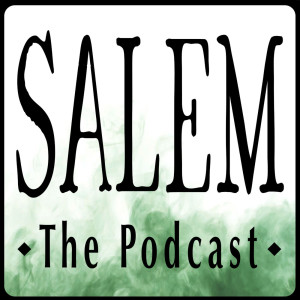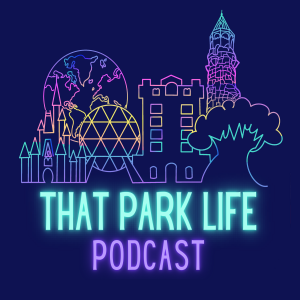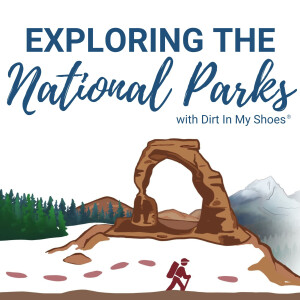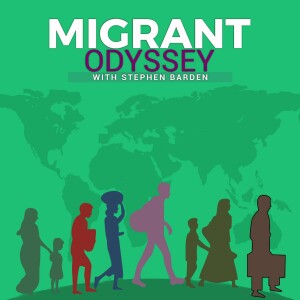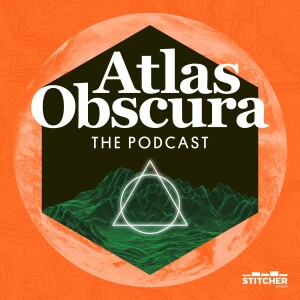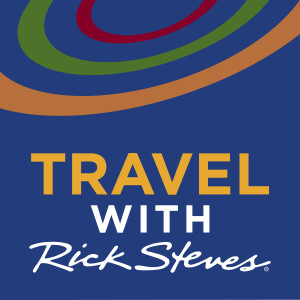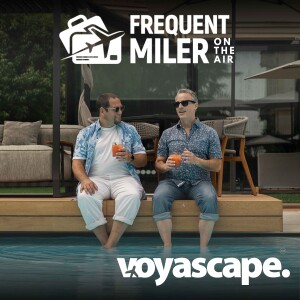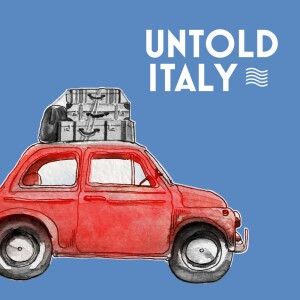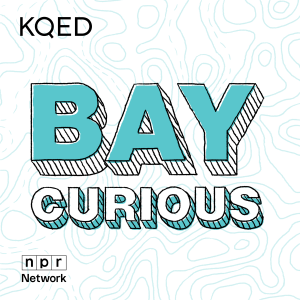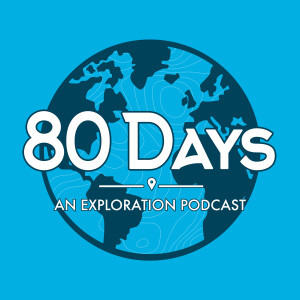

80 Days: An Exploration Podcast
https://80dayspodcast.com/category/podcast-episodes/feed/Episode List

Ceuta (S6.10)
Audio: Ceuta In this episode of 80 Days: An Exploration Podcast we’ll be talking about the autonomous city of Ceuta — Spanish exclave, military post, and free port on the coast of Morocco, at the Mediterranean entrance to the Strait of Gibraltar. Ceuta, Melilla (also an exclave), and other tiny islets along the coast of North Africa constitute the territories of Spanish North Africa. The city is on a narrow isthmus that connects Mount Hacho (also held by Spain) to the mainland. Mount Hacho has been identified as possibly the southern Pillar of Heracles, of the ancient Mediterranean world. Ceuta was controlled by the Muslim Umayyad Dynasty up to 1415, and then changed hands a number of times over the 15th and 16th Centuries. It played an important role in the Spanish Civil War, and gained its modern autonomous status in 1995. Ceuta’s land area is only about 18.5 square kilometres or 7 square miles, making it among the smallest places we’ve ever talked about, and has a population of around 80,000, similar to Andorra, the Isle of Man or the US Virgin Islands. The climate here is warm but moderated by the straits, with mean annual temperatures of 18 °C (65 °F) with average highs of 21 °C (70 °F) and lows of 15 °C (60 °F). The currency is the Euro, and the language is Spanish, with a strong Arabic presence. Ceuta and Melilla are the only piece of EU territory on mainland Africa – a political and legal reality that has never been recognised by Morocco, which claims both territories to this day. Fun Fact – Western Sahara was a previously-Patreon-backed finale episode. You guys just have a real hankering for contentious North African territories, don’t you? As we mention in the episode, this (somewhat delayed) finale to season 6 was voted on by our Patreon backers, and thanks as always to all of them for their support. You can sign up to Patreon to get a say in the episodes we cover in the seasons to come. Your hosts, as always, are Luke Kelly @thelukejkelly in Wexford, Ireland, Mark Boyle @markboyle86 in Toronto, Canada, and Joe Byrne @anbeirneach in Dublin, Ireland. Our theme music and other stings come from Thomas O’Boyle @thatthomasfella. Ceuta with Mount hacho visible in the background Some further reading material is provided below: This BBC Explainer on the status of Ceuta and Melilla is a good starting point for beginners. The BBC also has a useful factsheet. This CNN feature headlined “Inside the tiny corner of Spain that lies in the middle of North Africa” is another useful primer. History blog “A Small Part of History” has a lengthy post about the conquest of Ceuta by Portugal. For a more visceral look at the city, this video travel guide of Ceuta from Travel Obscurer is worth checking out. One of the many books we referenced in this episode was Europe or Africa? : a contemporary study of the Spanish North African enclaves of Ceuta and Melila by Peter Gold. It’s available on Archive.org. We also spoke about Count Julian, whose Wikipedia page is well worth perusing. Mark lent on A.R. Disney’s A History of Portugal and the Portuguese Empire – From Beginnings to 1807 for his section. You can find an excerpt here. Another useful read was The Spanish Exclaves in Morocco by Robert Rézette, which is available on Google Books. Anyone for a Wikipedia list of “People with the most children“? If you’ve heard Joe’s section, you’ll know why. For more on Lieutenant John Fraser and his trusty leg bone, see the National Army Museum. WebHispania has a fascinating blog post by Antonio M. Carrasco headlined The Ceuta border: a constant source of misunderstanding and conflict. The UK’s National Maritime Museum has a whole page dedicated to Cueta in the Napoleonic Wars. The UNHCR report on Anti-Muslim Hatred and Discrimination in Ceuta we mentioned is available here. The substantial page on Wikipedia dedicated to the border fence is here. More can be found in World of Walls: The Structure, Roles and Effectiveness of Separation Barriers by Said Saddiki which is available online here. On Franco and the Spanish Civil War, worth a read is The Crescent and the Dagger: Representations of the Moorish Other during the Spanish Civil War by Elisabeth Bolorinos Allard, available here. Some of the music used in the episode includes: The anthem of Ceuta, which is featured in the final music break Some processional marches and sacred music from the General Command of Ceuta An example of traditional Berber Muslim music Thanks to all our patrons who support the show. We really appreciate your continued backing of us. If you want to join them, more information is available at www.patreon.com/80dayspodcast

Shetland (S6.09)
Audio: Shetland In this episode of 80 Days: An Exploration Podcast we’ll be talking about Shetland, a group of about 100 islands, fewer than 20 of them inhabited, in Scotland, 210 km (130 miles) north of the Scottish mainland, at the northern extremity of the United Kingdom, around 340km or 210 miles from Norway. The islands total around 1,500 km2 (or 560 sq mi), making them similar in size to the nearby Faroe Islands [recommend listening to this past episode], American Samoa or Gran Canaria. Among the settlements on Mainland, the largest island, is Scalloway, a fishing port. Lerwick, also on Mainland, is the islands’ largest town and commercial and administrative centre. The early history of the islands is dominated by the influence of the Vikings, who settled here in the 9th Century. From the 14th century, it was incorporated into the Kingdom of Scotland, and later into the United Kingdom. The climate is generally windy, cloudy and often wet, with rain falling on more than 250 days a year, and average low temperatures a little above 1 °C (34 °F) in winter and around 14 °C (57 °F) in summer. Shetland is as far north as St Petersburg, Russia, or Anchorage, Alaska, which makes the islands an ideal place to watch the northern lights, or as they’re known locally the ‘mirrie dancers’ while in summer there is almost perpetual daylight, a state of affairs known locally as the “simmer dim”. We had a guest on the podcast this episode, local writer, tour-guide and podcasters Laurie Goodlad, who can be found on shetlandwithlaurie.com. Thanks to Laurie for her great contributions to helping us understand Shetland, only a fraction of which is included in the episode – if you’ve fallen in love with Shetland, much more can be found in her blog and podcast episodes. Your hosts, as always, are Luke Kelly @thelukejkelly in Wexford, Ireland, Mark Boyle @markboyle86 in Toronto, Canada, and Joe Byrne @anbeirneach in Dublin, Ireland. Our theme music and other stings come from Thomas O’Boyle @thatthomasfella. A Shetland pony photographed by Ronnie Robertson (CC-BY) The Prince of Wales set off a trend of Fair Isle jumpers, part of a general inter-war Northern Isles boost in knitting and garment industry Some further reading material is provided below: Some websites that give an overview of Shetland history include Historic-UK.com, ShetlandHistory.com, Shetland Museum and Archive‘s site and the article in Britannica More specifically on archaeology and prehistory, some resources include “Discover the Ancient Secrets of Shetland” (Shetland.org), the 2006 book “Prehistoric and Viking Shetland” by Noel Fojut and our guest Laurie’s podcast episode “A Guide to Shetland’s Archaeology” (among others) Some details on certain sites can be found elsewhere including the West Voe Midden, Stanydale Temple, Moussa Broch, the Papil Stone, and Jarlshof multi-era site Jon Dunn, a natural history writer writes about Shetland’s trees, or lack thereof A brief history of Shetland ponies Takes on the viking conquest of Shetland from HistoryExplained.org and Shetland.org BBC “In Our Time” episode on the Orkneyinga Saga, which touches on Shetland (despite focussing on the Earls of the nearby Orkneys); there is no saga specifically about Shetland Lerwick Town Hall’s Viking-containing stained glass and more information “How Shetland Became Part of Scotland“ Some details of late Mediaeval history during the transition from Norse to Scottish control is included in the article “‘Lords_of_Norroway’: The Shetland estate of Herdis Thorvaldsdatter” by Frans-Arne H Stylegar and “Some Forgotten Incidents and Personages in the Local History of Shetland” by Gilbert Goudie Some details on Robert Stewart and Henry Sinclair Eileen Brooke-Freeman (a placenames expert) writes about ‘hoidie hols’ used to escape press-ganging during the Napoleonic wars and recounts some stories, there is also some oral history recordings on Tobar an Dualchais of people recounting family stories about this time, such as George Morrison (1921-1989); Laurie also has an article on these caves Shetland Times has an article about Thomas Johnson, ancestor of the author Louis Mackey, who tells the tale of how he was press ganged by Rear Admiral Edward Thornborough and lost his legs in a battle in the Bay of Biscay, and his life after return Laurie’s take on the origins of the Up Helly Aa Festival, celebrating Shetland’s Viking heritage since the Victorian era A short film has been made about Johnnie Notions, a jack of all trades who developed inoculations for smallpox Laurie has an article on the 19th Century land clearances and the crofters’ war Some resources for young people on Shetland in WW1 and WW2 The story of the ‘Shetland Bus’ in WW2, and BBC retrospective on the first bombs to fall in the UK during WW2 that struck Shetland Reddit thread on what it’s like living in Shetland today Laurie’s podcast episode on (and in) Shetland dialect; “Shetland Fir Wirds” is a website that promotes the Shetland dialect, and has lots of information Music relevant to Shetland includes: A collection of Shetland music played by Tom Anderson and Violet Tulloch Hand me doon the fiddle, which includes the Radio Shetland tune Virtuoso fiddle player Willie Hunter (Composer Page on TheSession.org) playing his composition “The Cape Breton Fiddler’s Welcome To Shetland” and “Leaving Lerwick Harbour” The Jarl Squad of “vikings” singing a traditional “Up Helly Aa” song in a shopping centre, in full guizer costume Lerwick Brass Band and Squad perform “The Norseman’s Home” Thanks to all our patrons who support the show. We really appreciate your continued backing of us. If you want to join them, more information is available at www.patreon.com/80dayspodcast

Minisode: Christmas Quizzes 2024
Audio: Christmas Quizzes 2024 https://media.blubrry.com/80_days_an_exploration/content.blubrry.com/80_days_an_exploration/80Days_Christmas2024.mp3 In this episode of 80 Days: An Exploration Podcast, we’re exploring (in the format of festive trivia and quizzes) winter celebrations from around the world, and diving into our back-catalogue to test our memories of explorations past. Grab a cup of cocoa or egg nogg and enjoy! From all of us, have a very merry festive season, and we’ll see you in 2023. Your hosts, as always, are Luke Kelly @thelukejkelly in Dublin, Ireland, Mark Boyle @markboyle86 in Vancouver, Canada, and Joe Byrne @anbeirneach in Dublin, Ireland. Our theme music and other stings come from Thomas O’Boyle @thatthomasfella. Thanks to all our patrons who support the show. We really appreciate your continued backing of us. If you want to join them, more information is available at www.patreon.com/80dayspodcast See you in 2025 for the conclusion of Season 6! A large ghee lamp is lit atop the Arunachala hill in Tiruvannamalai during Karthika_Deepam. (photo by Prajnaana – Own work, CC BY-SA 4.0, https://commons.wikimedia.org/w/index.php?curid=85769601)

Socotra (S6.08)
Audio: Socotra In this episode of 80 Days: An Exploration Podcast we’ll be talking about Socotra, an island in the Indian Ocean, lying between the Gulf of Aden and the Arabian Sea. It lies 380 kilometres (205 nautical miles) south of the Arabian Peninsula and 240 kilometres (130 nautical miles) east of Somalia. Geographically part of Africa, it has historically been an extremely isolated island due to the monsoon winds that make it difficult to reach for large parts of the year. This isolation has resulted in unique plant and animal life, with the island harbouring many species which went extinct elsewhere tens of thousands of years ago, and It has been described as “the most alien-looking place on Earth”Over its history, the island has seen influence from Ethiopian Christians, Greeks, Arabs, Portuguese Explorers and the British East India Company, among others, and as a result has a unique blend of cultures and languages. The island is 3,796 km2 (1,466 sq mi) in size, making it similar in land area to the US state of Rhode Island, or slightly larger than Luxembourg. Around 50,000 people today call Socotra home, with the principal city, Hadibu, boasting around a fifth of the total population. The island became a part of Yemen in 1967, and has recently been impacted by ongoing conflict caused by the Yemeni Civil War, which began in 2014 and is ongoing as we record this. In 2008, Socotra was recognised as a UNESCO World Heritage Site for its unique flora and fauna. The islanders rub noses when they are introduced, and primarily speak Soqotri, an ancient Semitic language, which has up to a hundred words to describe a goat. Your hosts, as always, are Luke Kelly @thelukejkelly in Dublin, Ireland, Mark Boyle @markboyle86 in Toronto, Canada, and Joe Byrne @anbeirneach in Dublin, Ireland. Our theme music and other stings come from Thomas O’Boyle @thatthomasfella. Some further reading material is provided below: A chronology of Socotra from Socotra.info British Empire Maproom‘s early history of the island Discover Socotra’s history page Socotra: The Mysterious Island of the Assyrian Church of the East at assyrianchurch.org Socotra’s misty future from The New Scientist (July 1995) Socotra: rediscovering the ‘island abode of bliss’, from the Financial Times (June 2023) Can Socotra, Yemen’s ‘Dragon’s Blood Island,’ be saved? by National Geographic (November 2018) Island Africa : the evolution of Africa’s rare animals and plants – Jonathan Kingdon on archive.org The Soqotra island:Where phoenix is revived from The Yemen Times (May 2003) A Successful Adaptation to Failure: the Portuguese on the island of Socotra during the sixteenth century by Renata Cabral Bernabé Socotra: A mysterious Arabian island gives up one of its secrets by The National News The Third Voyage of the English East India Company (1607-1610) at Qatar National Library Botany of Socotra by Balfour, Isaac Bayley, 1853-1922 at archive.org Yemen. The Socotra Archipelago Threatened by the Civil War at orientxxi.info Socotra — 1943 by jimmiej at BBC WWII Archives Music relevant to Socotra includes: Khatr Ghusn Al Qana from YouTube Thanks to all our patrons who support the show. We really appreciate your continued backing of us. If you want to join them, more information is available at www.patreon.com/80dayspodcast

Belize (S6.07)
Audio: Belize In this episode of 80 Days: An Exploration Podcast we’ll be talking about the Central American country Belize, formerly known as British Honduras. This small country on the Yucatan Peninsula. It is bordered by Mexico to the north, the Caribbean Sea to the east, and Guatemala to the west and south. This region was a stronghold of the Maya Heartland from around 1500BC up to the arrival of Europeans, namely the Spanish, in the 1600s. A tussle between Spain and Britain developed in subsequent decades, and Belize became a British colony in 1840, and a Crown colony in 1862, before achieving full independence in 1981. The country has an area of 22,970 square kilometres (8,867 sq mi) and a population of just over 410,000, making it similar in size to Wales, Djibouti or the US state of New Jersey, but the least densely populated nation in Central America. This is a very diverse place, ecologically, culturally and linguistically. The official language is English, but there are many other communities such as Maya, Garifuna, Creoles and even Mennonites, who speak a variety of tongues. Belize has over 400 islands or Cays off its coastline, as well as one of the world’s largest marine sinkholes, the Blue Hole, which is 318 m (1,043 ft) across and extends to a depth of 124 m (407 ft). The country also boasts the second largest barrier reef in the world after the one everyone’s heard of in Australia. Your hosts, as always, are Luke Kelly @thelukejkelly in Wexford, Ireland, Mark Boyle @markboyle86 in Toronto, Canada, and Joe Byrne @anbeirneach in Dublin, Ireland. Our theme music and other stings come from Thomas O’Boyle @thatthomasfella. Some further reading material is provided below: A History of Belize (1973) by Narda Dobson; A History of British Honduras (1946) by William Arlington Donohoe Belize Travelcast episode on the origins of Belize culture Some details about archaeology and Maya civilisation can be found in: “Preceramic Occupations in Belize: Updating the Paleoindian and Archaic Record”, DOI: https://doi.org/10.2307/25063047; “Prehistory of Belize” by Norman Hammond, https://doi.org/10.1179/009346982791504571; O. Nigel Bolland Country Study of Belize Maya Jade Head; Mayan Ruins website about Lamanai; University of Cincinnati’s Brief History of Belize (timeline); BBC’s Belize timeline Ambergris Caye “Early History” webpage Creating ‘Belize’: the he Mapping and Naming History of a Liminal Locale – Matthew Restall https://doi.org/10.1080/00822884.2019.1573962 Details on the Battle of St Georges Caye Video about Logwood (YouTube) Some details about the independent Maya state Chan Santa Cruz that arose after the the Caste War of Yucatán (1847–1901) Belizean involvement in World War I anecdotes, and BBN Article on the 1919 Revolution in Belize city. Belizean Foresters in Scotland during World War II Video of an interview with George Price (YouTube), the ‘father of Belize’ Information on the Great Blue Hole Groups in Belize include Creoles/Kriols, Garifuna, Maya (Yucatec, Mopan and Q’eqchi’), Mestizo/Spanish-speaking and Mennonites Phrasebook in Yucatec Maya, one of the many languages spoken in this country, in addition to English, the official language Music relevant to Belize includes: Music archaeology video: https://www.youtube.com/watch?v=3RRDLs63vKs Leonardo Acal – Maya harp music: https://www.youtube.com/watch?v=TfzuKSXMOCg Garifuna womens group music: https://www.youtube.com/watch?v=b7w4B5dWFTc Leela Vernon – Creola Kulcha/brukdown: https://www.youtube.com/watch?v=MfxXVYS_F30&list=RDQMlehP_mBHioM&index=2 Garifuna music: https://www.youtube.com/watch?v=eUddieZoQyY Belize Creole drumming: https://www.youtube.com/watch?v=N45WtarFrpo Thanks to all our patrons who support the show. We really appreciate your continued backing of us. If you want to join them, more information is available at www.patreon.com/80dayspodcast
Create Your Podcast In Minutes
- Full-featured podcast site
- Unlimited storage and bandwidth
- Comprehensive podcast stats
- Distribute to Apple Podcasts, Spotify, and more
- Make money with your podcast
